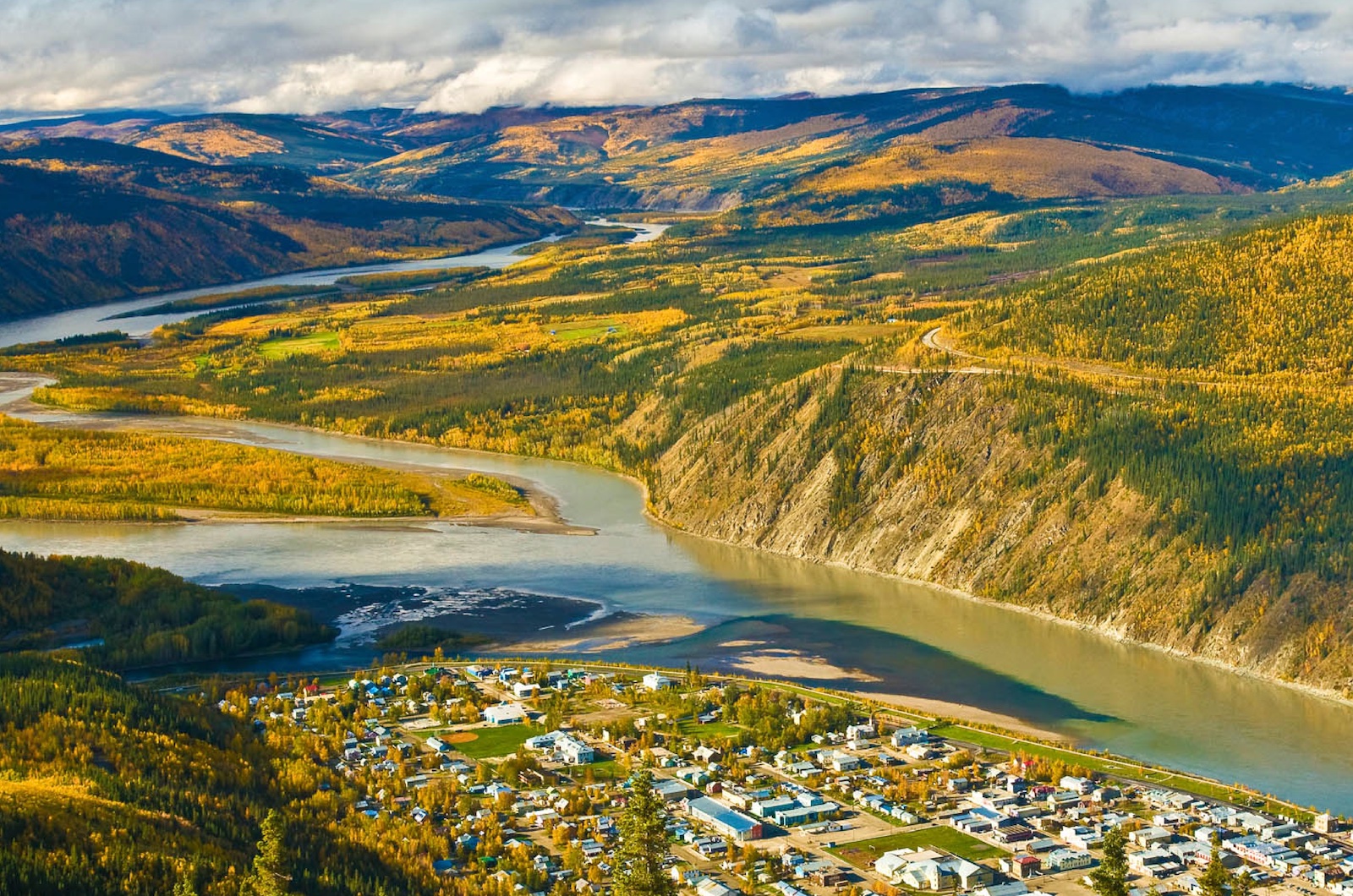My guide to the Klondike River nearly misses his turnoff. Scratching his head under a faded baseball cap, he slows our van to a crawl along the highway, then points to a thinned patch in the poplar trees and scrub. “I think that’s it.”
We pull the van off the road and unload the canoe 20 metres through the bush to the riverbank, then push off into the stream, choppy and ice cold under a grey September sky. As we paddle briskly across the current toward the wild north bank, it’s hard to believe I’m on my way to visit an apple nursery—one of the northernmost in the world.
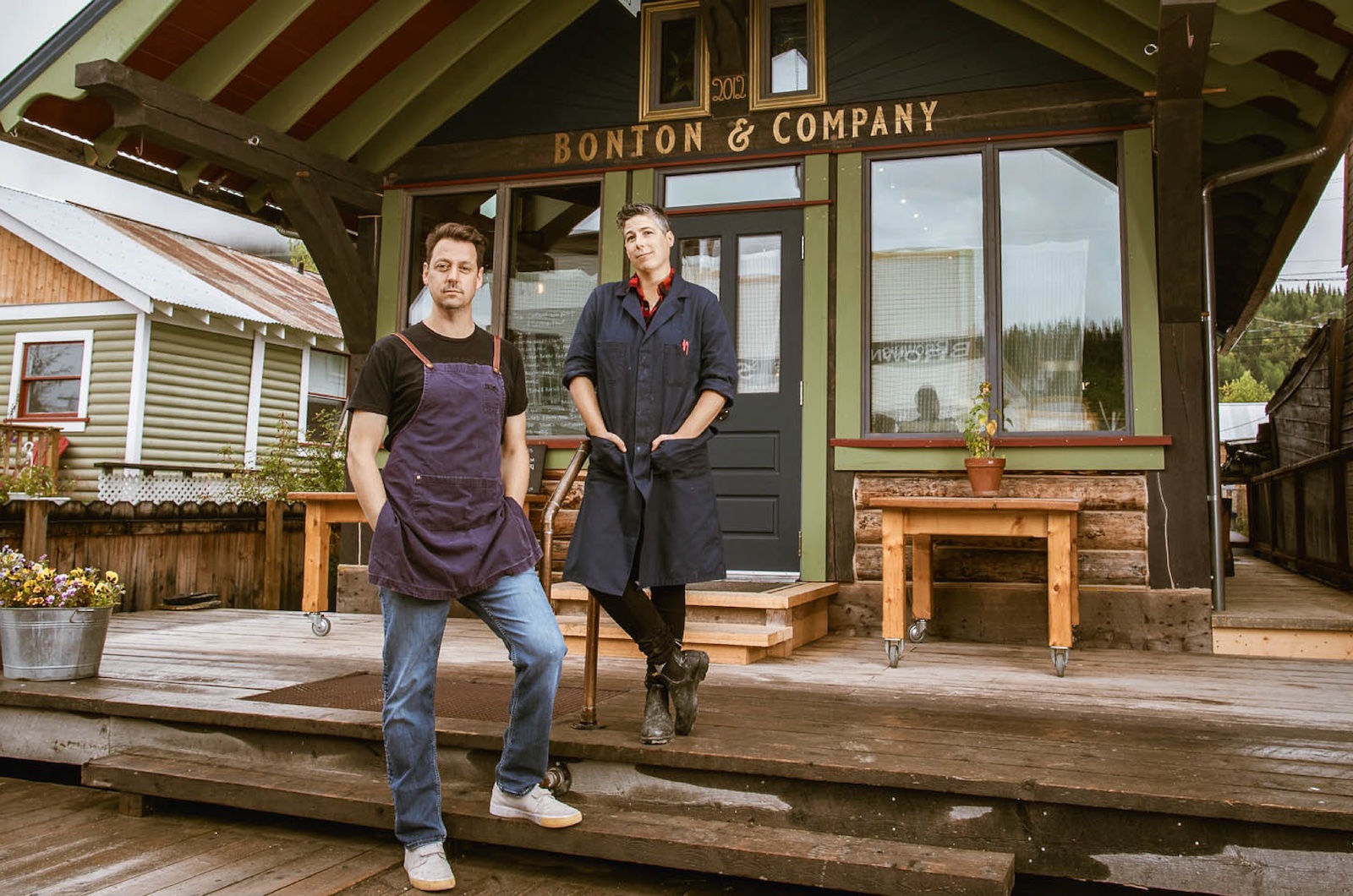
Dennis Dunn and Shelby Jordan own and operate BonTon & Company, a Dawson City restaurant committed to local Yukon ingredients.
Two kilometres downstream, my guide steers us sharply past a sandbar into a quiet bayou that hooks back between thickets of white spruce. We pass a skiff tied to a lonely dock, then pull the canoe up when we see the red cedar siding of John Lenart’s house peek through the branches.
Lenart has lived in this isolated patch of forest for more than 35 years, doing what seems impossible—coaxing a thriving orchard out of the permafrosted ground, just two and a half degrees south of the Arctic Circle. A tall, sapling- thin man with a wispy white beard and sporting shredded gardening gloves and black Crocs, he leads me past a vegetable garden bursting with kale, peas, and romanesco on the way to see the prized apples.
He and his partner, biologist Kim Melton, grow 60 varieties, mostly Russian or experimental trees from the University of Saskatchewan. Some, such as one of his favourites, Klondike Honey, grow nowhere else in the world. Ducking into a greenhouse, I spot a single, tiny, brilliant-scarlet apple hanging from a slender branch. When I point it out to Lenart, he waves it off with a laugh.
That’s a Dawn crabapple, he tells me— beautiful, but mealy and tart. Its only function is to serve as the hardy root stock of a dwarf tree onto which are grafted half a dozen other varieties, a technique Lenart uses to test the fruit against the freezing winters.
“What I’ve learned is that the only way you can determine if something will grow somewhere is by growing it.” —John Lenart
“What I’ve learned is that the only way you can determine if something will grow somewhere is by growing it,” he says. Twenty years ago, when he began to grow fruit trees in earnest at Klondike Valley Nursery, he hauled 450 varieties to his property—“soldiers to the slaughter,” he called them. Only the few hardiest survived.
“Down south, the apple market is extremely competitive. You’ve got to put out an ass-kicking good fruit to get into the market,” he says. “Up here? If it lives…” He shrugs.
Lenart paddles his apples, pears, haskap berries, and young trees across the river to sell in Dawson City. In winter, he can walk across the ice. Last year, after two especially cold winters (down to -50°C), his orchard only produced about 500 pounds of apples, “a paltry amount” compared to southern orchards, he says, but precious this far north.
***
Food is on everyone’s mind in Dawson. Once a fishing camp of the Tr’ondëk Hwëch’in people at the confluence of the Klondike and Yukon Rivers, the city swelled as gold miners raced north in the 1890s, each hauling 1,000 pounds of provisions overland. An agricultural fair in 1903 offered prizes for the best cabbages, summer savoury, fruit jellies, oats, and home- churned butter. More than a century after the gold rush collapsed, the 1,500 people now living in Dawson import 97 per cent of their food. As weather fuelled by climate change threatens the long highway north, food security feels more vulnerable than ever.
But the landscape I find in the Yukon is overflowing with creative, driven people just like Lenart, growing, raising, hunting, and foraging a wealth of local food. A high-tech startup designs solar-powered microgreen pods inside shipping containers. A unique inland fish farm brims with Arctic char. At yearly harvest camps, the Kluane First Nation teaches young people to catch muskrat and preserve moose meat.
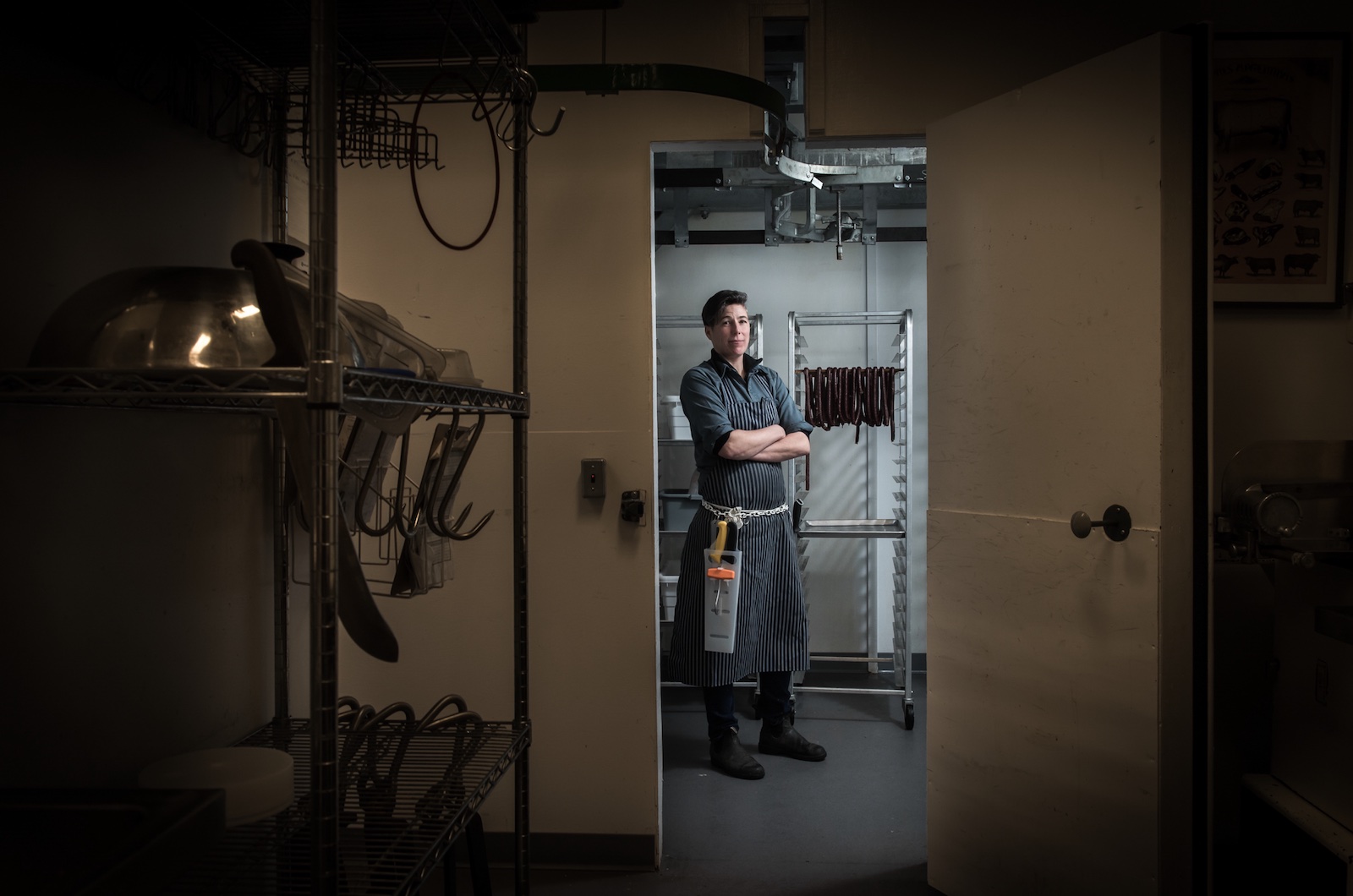
I bite into one of Lenart’s apples—a tiny, crisp variety the size of a plum—and it crunches, sweet, juicy, and fragrant. A box of these, he tells me, were just ferried across the Klondike to a remarkable little restaurant in Dawson City that, since it opened two years ago, has become a meeting place for the hardy food world of the Yukon.
***
“This is it! It’s tight.” The door creaks and slams as Shelby Jordan ushers me into the loft above her restaurant, BonTon & Company. The ceiling is complicated by a jumble of pipe that once served a wood stove, and metal rails on which whole pig carcasses can be winched upstairs and rolled inside. As afternoon light floods in through the windows, we can see out to the weather-blackened wood, tin roofs, and rusted boilers and farm equipment that tumble through the backyards of Dawson City. A lovingly restored butcher’s bandsaw that was rescued from the old Westminster Hotel sits in the corner, next to piles of dehydrated oyster mushrooms and a basket of those apples from John Lenart.
“It’s a little quirky,” Jordan says apologetically. “It used to be an apartment.”
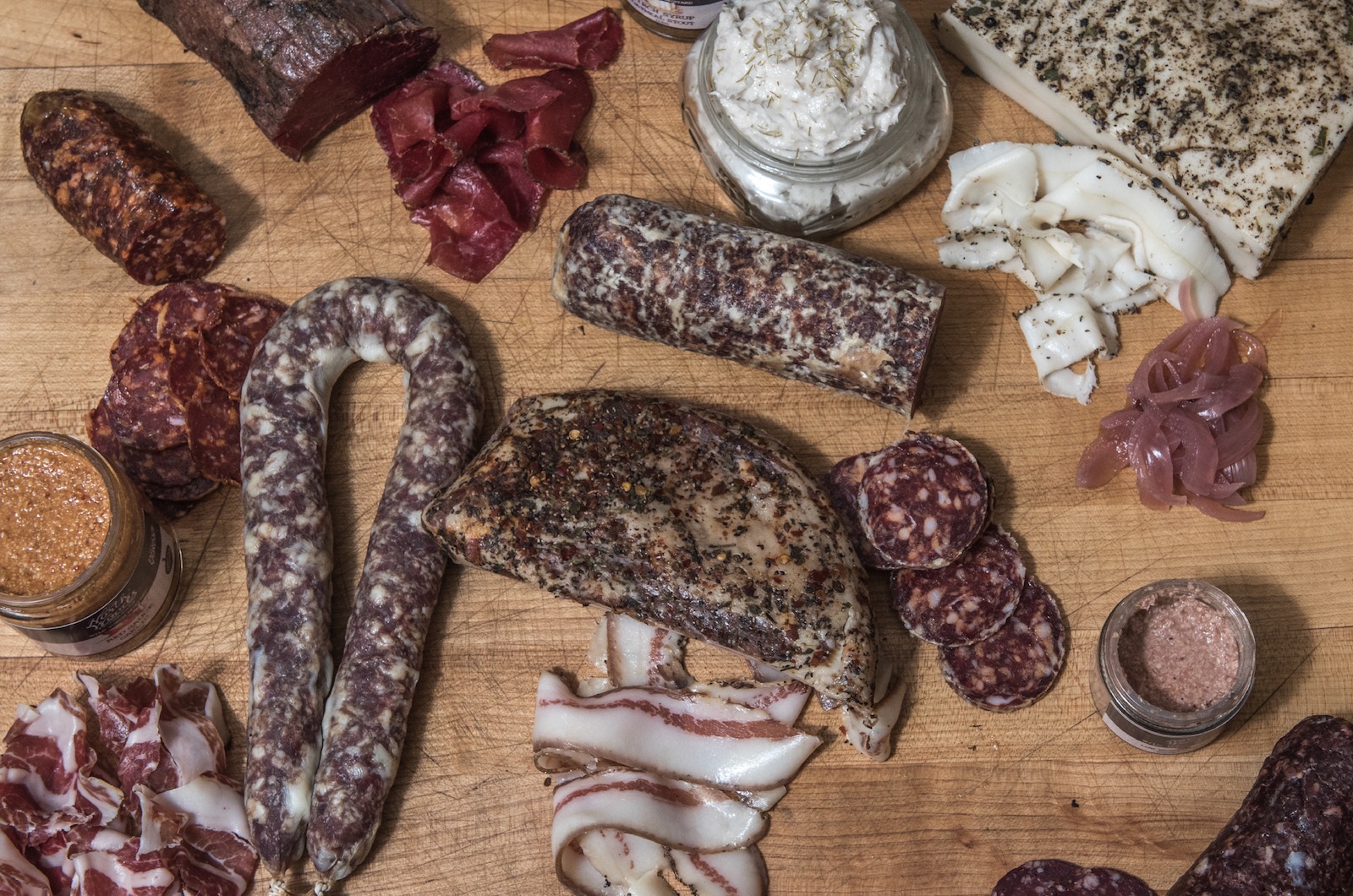
The repurposed loft is now the prep kitchen and butcher shop of a thoroughly remarkable restaurant. In a city of fewer than 2,000 people, BonTon serves food with an exacting culinary finesse that would impress critics in any southern city of millions. The small plates, served tapas style, feature local Yukon ingredients with big, bold, inventive flavours. At the top of the menu, you’ll always find local charcuterie Jordan cures herself, a careful and uncompromising art she trusts to no hands but her own.
Jordan moved to the Yukon in 1999, working in renewable resources and environmental assessment, a stressful and political job that fed her fascination with food and sustainable eating. After a 15-year career, she quit to study butchery and charcuterie at Thompson Rivers University. On returning to Dawson, she set up a backyard butcher shop, selling out of cured hams and sausage through an email list every Saturday.
Jordan is broad shouldered and relaxed, with a badger stripe of grey in her hair. Her first years in the Yukon, she was a vegetarian, but living in the north has a way of changing the way people look at food. While environmentally conscious eaters in the south bend toward plants, in the Yukon meat is the food most intimately tied to the land. In autumn, it’s understood that everyday business grinds to a halt as shopkeepers and insurance brokers head out on the land to hunt.
“Here, eating meat isn’t a matter of healthy or not healthy. It’s about supporting each other,” she says.
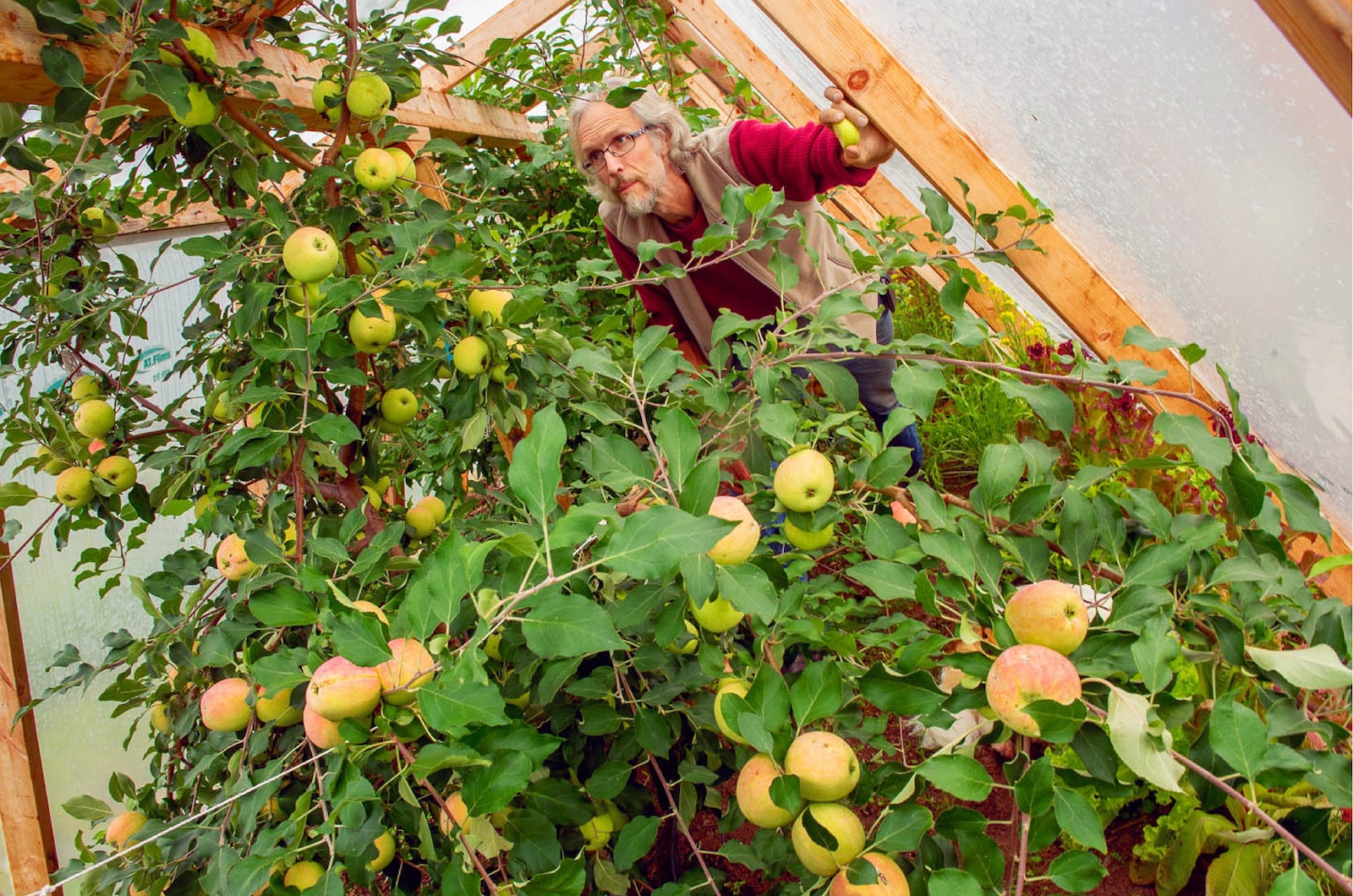
John Lenart grows 60 varieties of apples able to survive Yukon temperatures.
The dishes she serves at BonTon reflect the new philosophy of eating she’s developed in the Yukon: small, local, purposeful, nutritionally dense food. Pork-head terrine with grainy house- made mustard, Southern fried romanesco dipped in remoulade, smoked pork shoulder on roasted potatoes, each carefully sourced from a local farmer. “The idea of sharing these little morsels of delicious food I think is helping to change people’s minds about eating smaller,” she argues. “It’s not just what you’re eating but also the company we keep—customers and friends and food producers.”
Jordan and her business partner, hospitality manager Dennis Dunn, started the restaurant in the summer of 2020. Since then, it has survived on a combination of local enthusiasm, government grants, and a few creative pivots. Downstairs during the day, the BonTon bar does a bustling double duty as a coffee shop. A glass case near the door displays Jordan’s charcuterie alongside white-rinded cheeses, camembert, and year-old cheddar that were made and aged only a few kilometres away.
***
When we push off from Lenart’s orchard, we float back into the current of the Klondike, navigating around an island to land at a dock, jutting out from a gently sloping patch of riverbank. Paul Sadlier meets me at the riverside. A former woodsman from Fort Nelson, B.C., he now farms vegetables on the north bank, side by side with his son Loren, who raises dairy cows. A posse of goats follows him down to the water, nuzzling through the wire fence in curiosity.
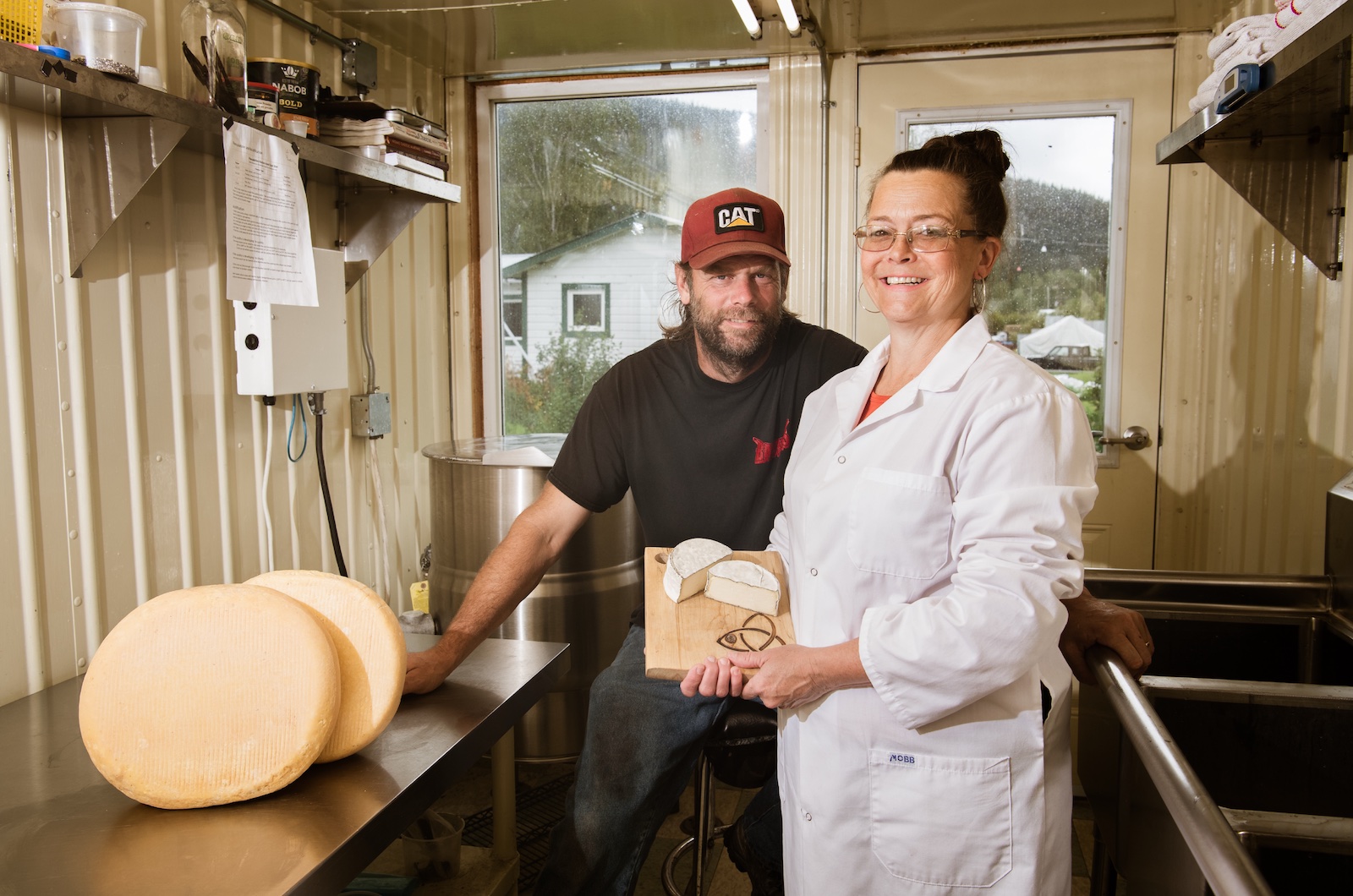
Jen and Loren Sadlier produce 63 kilograms of cheese a week during peak season.
“When we got here, you couldn’t see anything,” says Paul, a jovial mountain man with a fringe of a beard, gesturing at the land he cleared from brush with a chainsaw. “You could see the roofs—it was run right down. We cut and cut and cut.”
His wife, Becky, is packing pole beans for the farmers market, hair pulled back with a red bandana. Together they take me up to near the forest edge where, in the fresh air, they grow kale, onions, primordially giant horseradish, raspberries—Becky says she’s picked 150 pounds this year—and hummocks of thyme, oregano, mint, and parsley that will add zest to the BonTon menu.
Greenhouses host a jungle full of vines that seem miraculous this far north: cascades of tomatoes, eggplant, and peppers. “This one’s my favourite, Chocolate Crinkle,” Paul says, handing me a deep-purple-splotched cherry tomato that is velvety and rich to taste. “Sprinkle,” Becky corrects.
At the pasture I meet Paul’s daughter-in- law Jen Sadlier, the cheesemaker who supplies BonTon, waving on the way down to her husband, Loren, who is mowing tractor loads of grass. The past two summers have been too wet to dry hay for the winter, so Jen and Loren are storing silage, a fermented grass sauerkraut that freezes solid in the Yukon winter and can be chipped off and fed to the cattle. “Dairy is the hardest form of agriculture. And doing it this far north is even harder. It’s really kind of insane that we tried this,” Jen admits.
While environmentally conscious eaters in the south bend toward plants, in the Yukon meat is the food most intimately tied to the land.
As well as the struggle to keep the cows fed— sometimes paddling hay bales across the river in a canoe—there’s ferrying equipment across the river and milking by hand when the power goes out. The slow pace of cheese suits the isolated farm. During the six weeks when the ice forms and breaks on the river, cutting the Sadliers off from all contact with the rest of the world, fluid milk would go bad; cheese only gets better. At the season’s peak, Jen makes 63 kilograms of cheese a week, including cheddar and monterey jack.A creamy soft cheese she calls “polarbert” takes centre stage on the BonTon cheese plate.
***
Raising cattle in the Yukon is a race against the limitations of land, sun, rain, and season. Everywhere there has to be compromise. Some farmers haul in hay from the south to feed their cattle. At Takhini River Ranch northwest of Whitehorse, Scott Dickson prefers to send his south to fatten on Alberta hay before trucking them back to the ranch to be finished on Yukon alfalfa and slaughtered.
Ducking past shelves of spices and curing salts, Dickson strides through his butcher shop to grab a package of his signature sausages (“Takhini weenies,” he calls them with a chuckle, named after his ranch.) Following behind, I’m brought up short by two animal carcasses, skinned and trimmed, hanging floor to ceiling from hooks. “Woodland caribou,” he says. “Just had a guy drop it off. I’m not cutting any meat, so I’m hanging it for him for 10 days.”
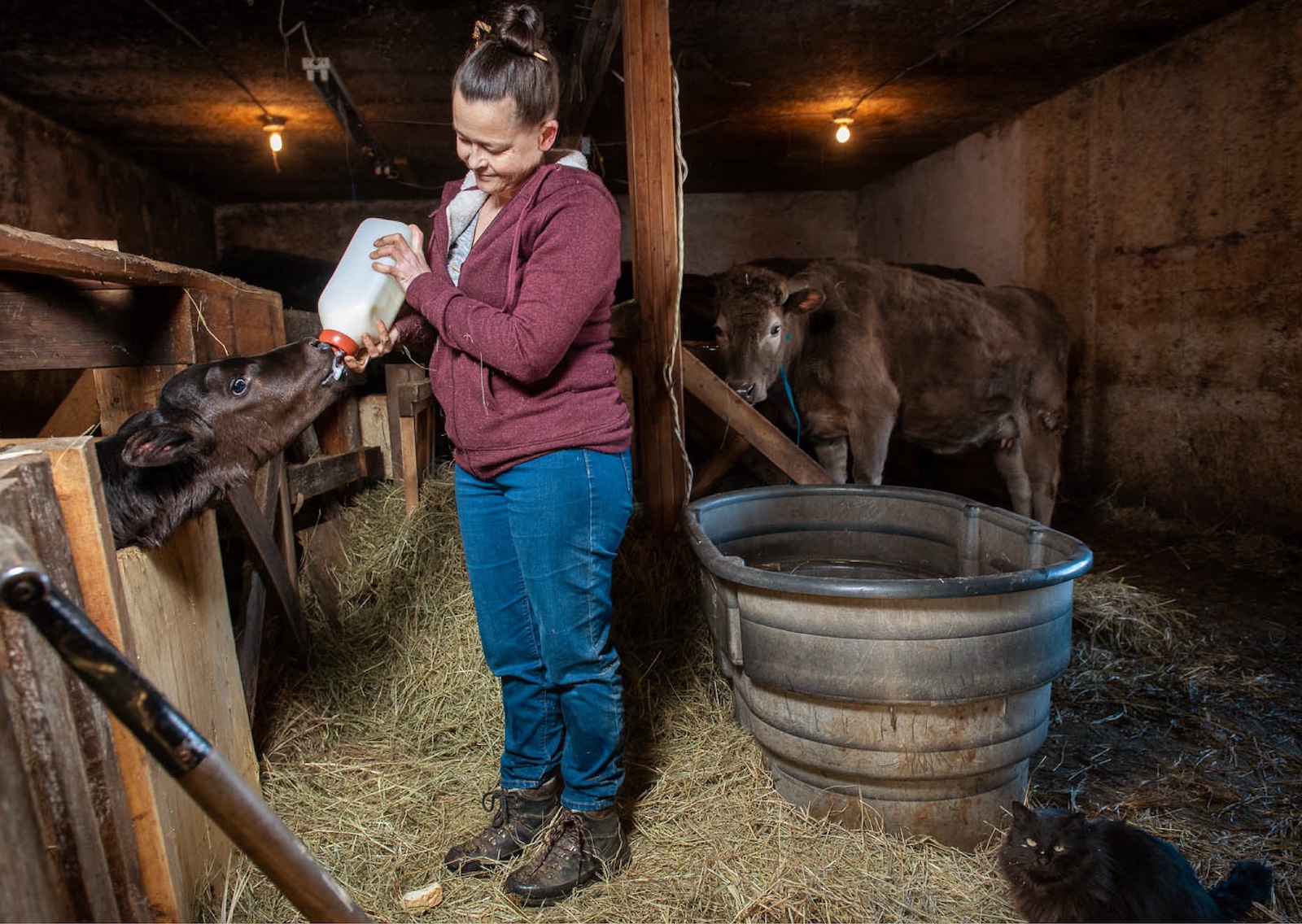
Jen Sadlier uses milk from the family farm to make cheeses such as monterey jack and cheddar.
Dickson is a butcher and rancher, a towering man from the Ta’an Kwäch’än Nation who grew up on a diet of steak in the tiny community of Beaver Creek. He cares for 80 head of cattle that graze in his fields at Takhini River Ranch, overlooked by the shadowy peaks of the Tagish Highland. Soon, he tells me, he’ll also be in possession of a rare prize: his own abattoir.
Farmers in the Yukon can sell animals from the farm gate but can’t sell cuts for retail unless the meat is inspected. With only one government- run mobile abattoir roaming the territory, there’s a sharp limit to how much local meat farmers can provide. In Dawson City, Shelby Jordan has to slaughter all her own meat for BonTon in one breathless week when the abattoir rolls through town, packing walk-in freezers with a year’s supply. It’s a system she and other butchers are trying to change.
In the kitchen, Jackie Dickson pinches the crusts of meat pies with the practised flow of a woman who bakes more than 100 a day. “You can tell when the meat is finished on that alfalfa,” she says. “It’s real nice.”
By some definitions, Takhini meat doesn’t fit the Yukon-born-and-raised label, because it spends time out of territory. But Jackie says that to her, what matters is that the food supply is in the hands of Yukoners. “I think we get confused in saying what’s local,” she says. “If the First Nations person that’s making your jerky is not considered local, we’ve got a problem. We’ve misconstrued those definitions.”
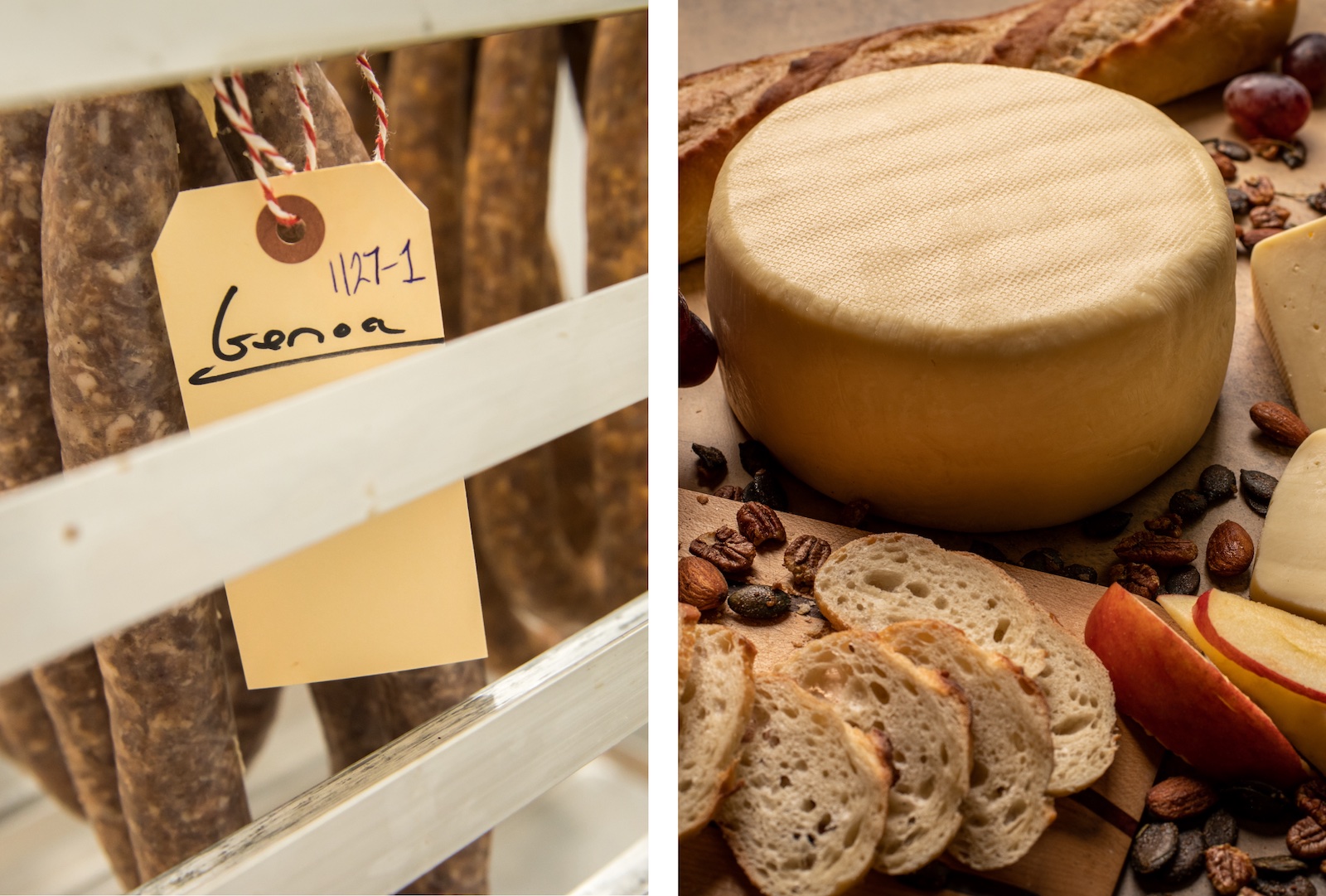
Takhini beef is local enough for Jordan. The Dicksons’ short ribs will make their way down the Yukon River to the BonTon kitchen, where they’ll be rubbed in ancho chili and espresso, and served with Guinness barbecue sauce and slaw from cabbages grown along the Klondike.
Jordan agrees that it’s the people who make Yukon cuisine what it is—the perseverance of farmers, growers, and hunters who believe in local food and what it can do.
“There’s interest and passion and a touch of skill, and that’s what Dawson is made of,” she says.
“That’s why most of us are here.”
Read more from our Spring 2023 issue.

